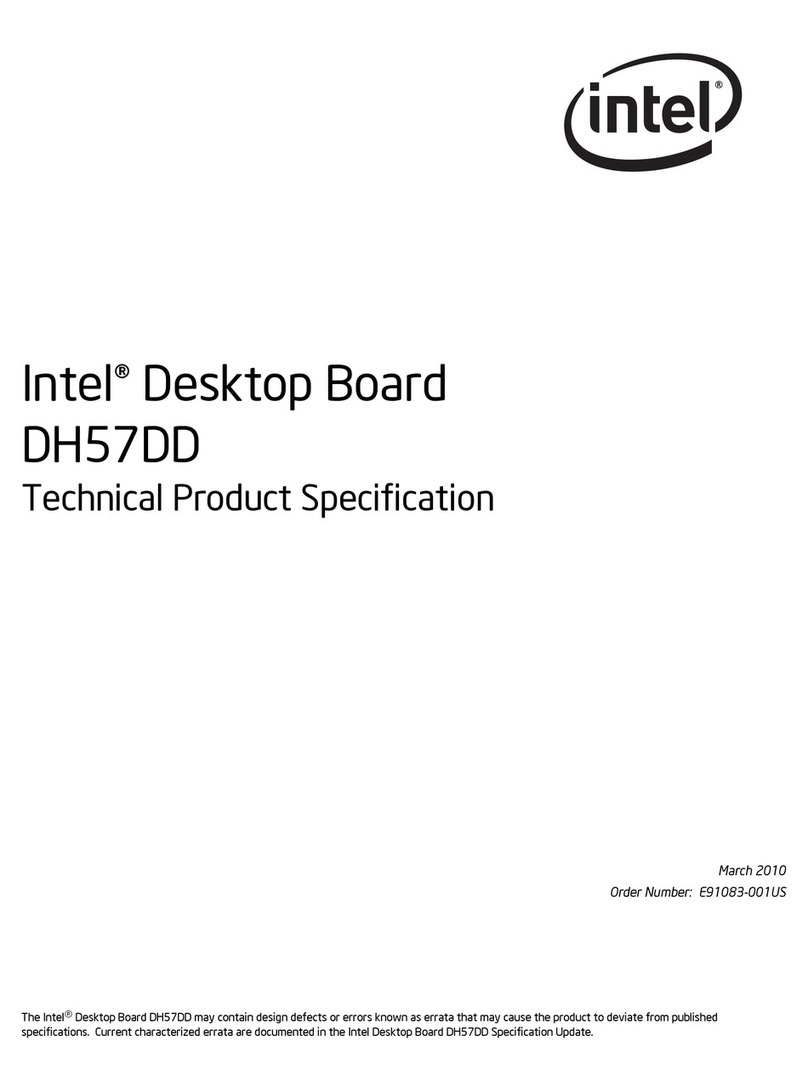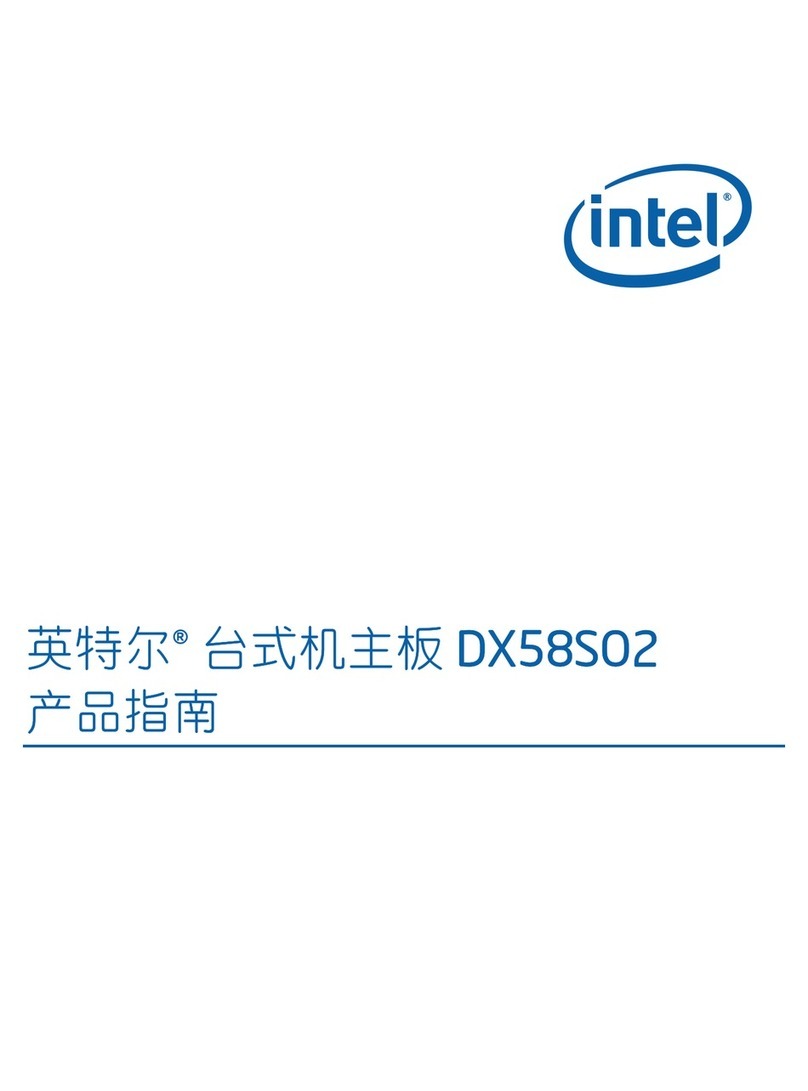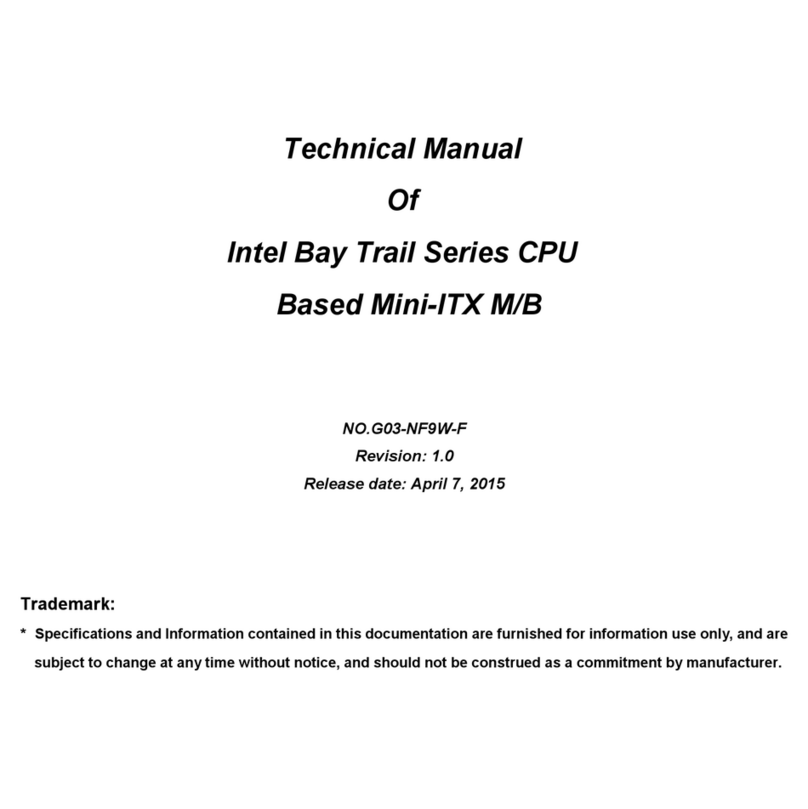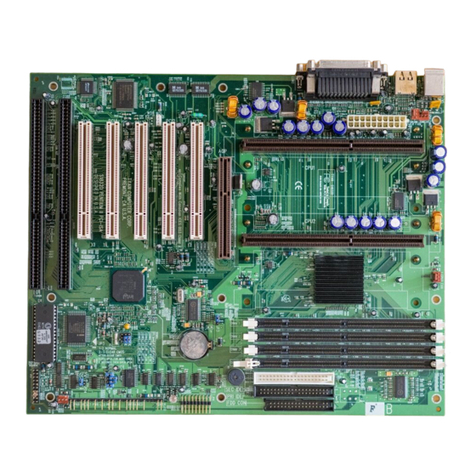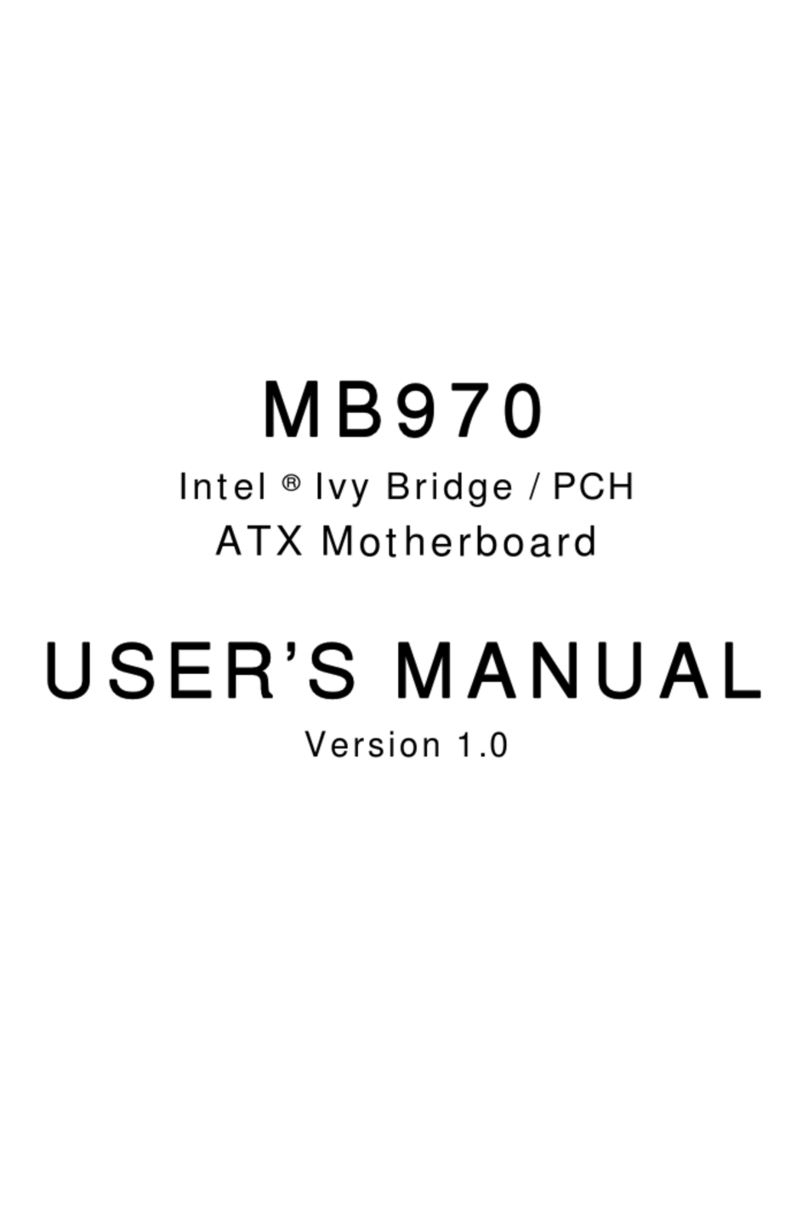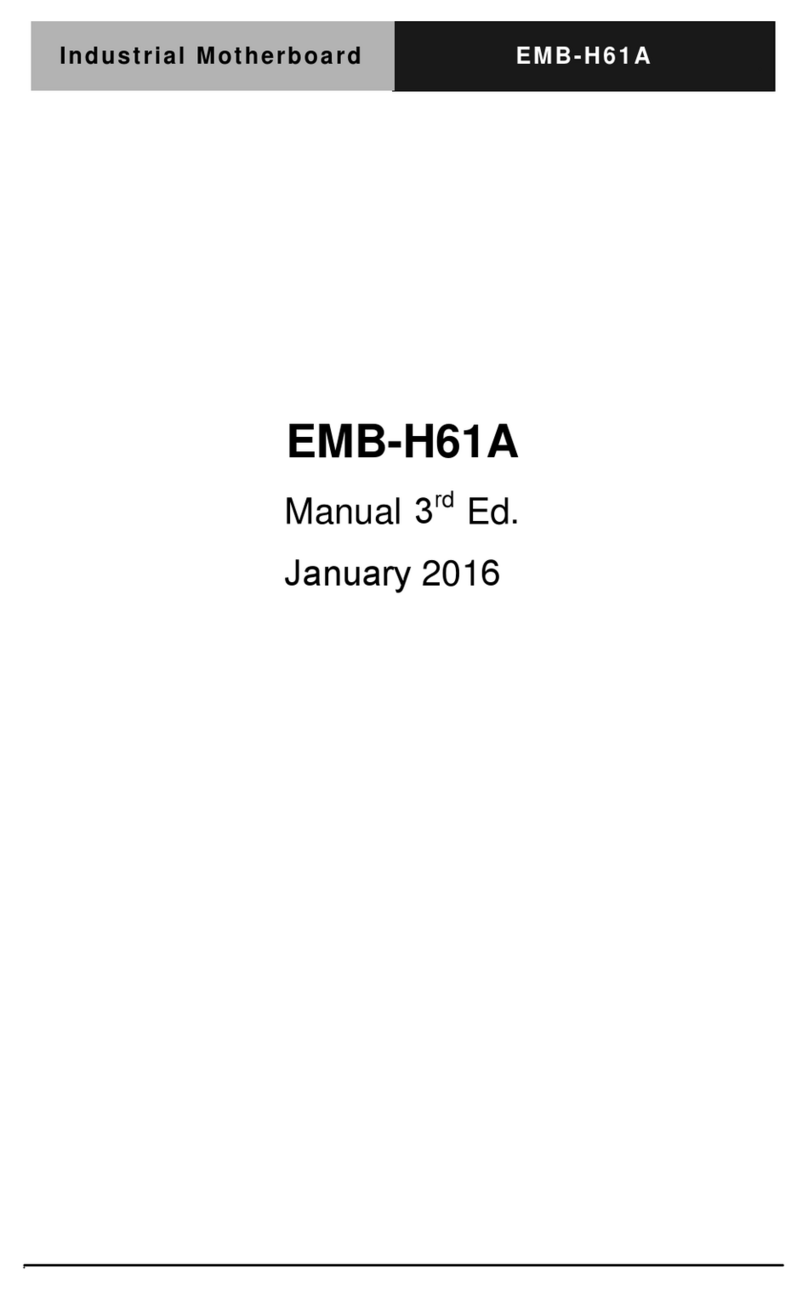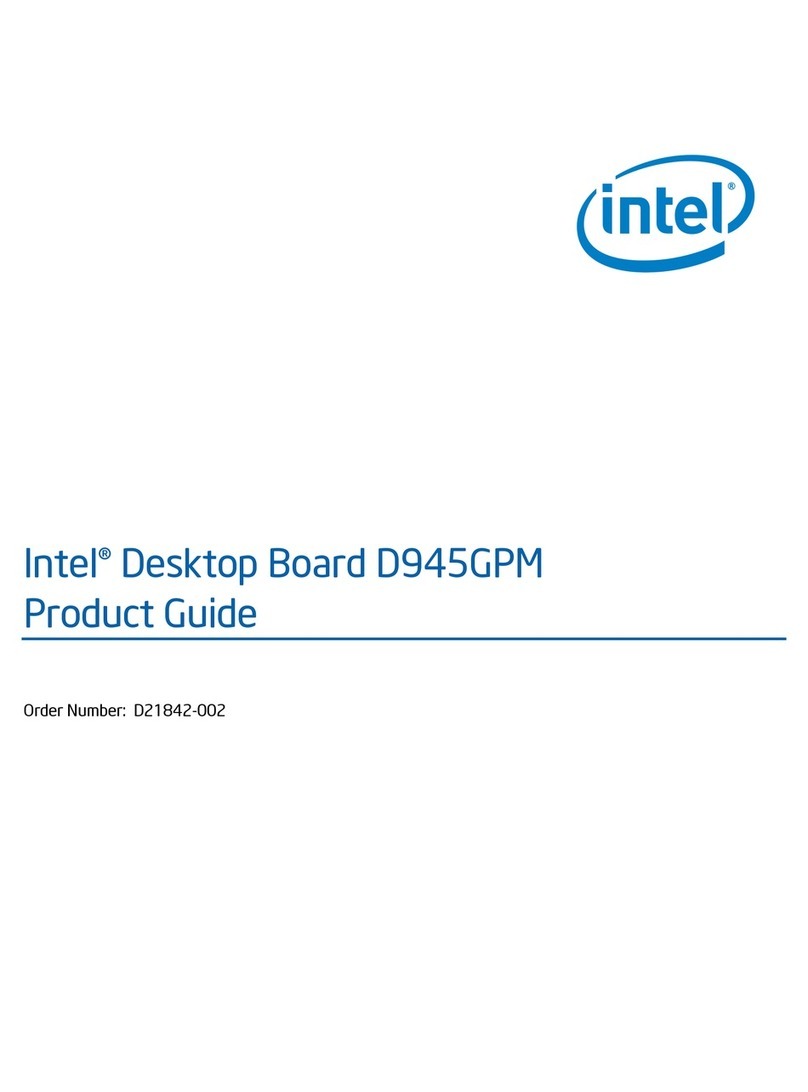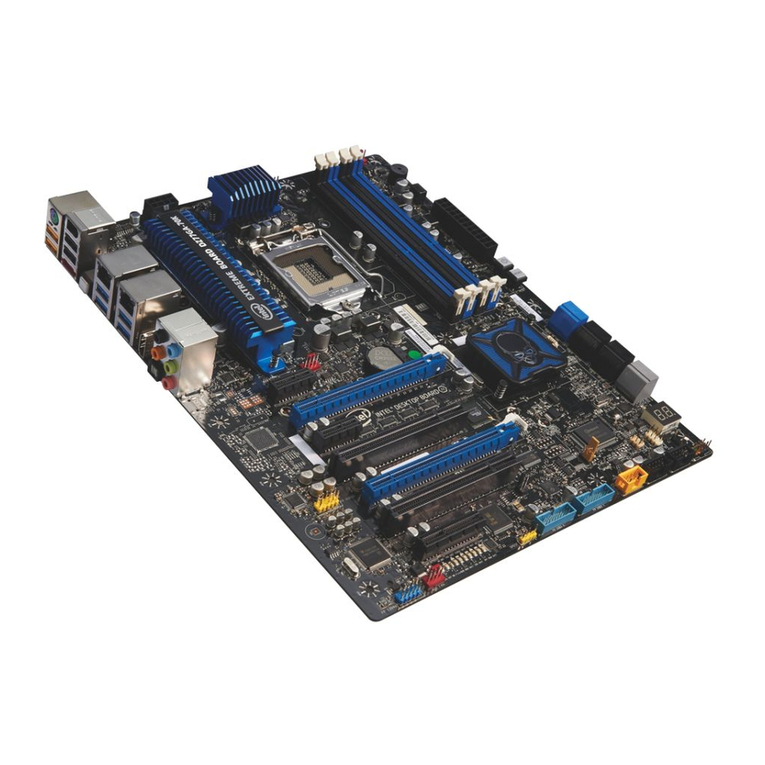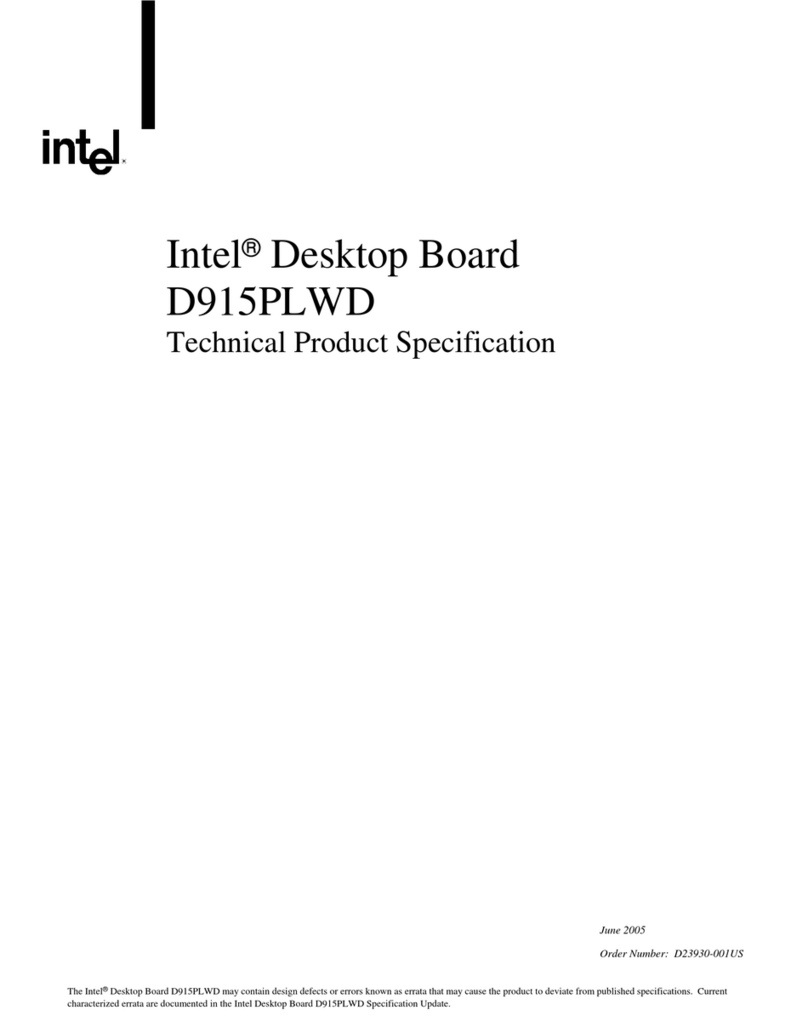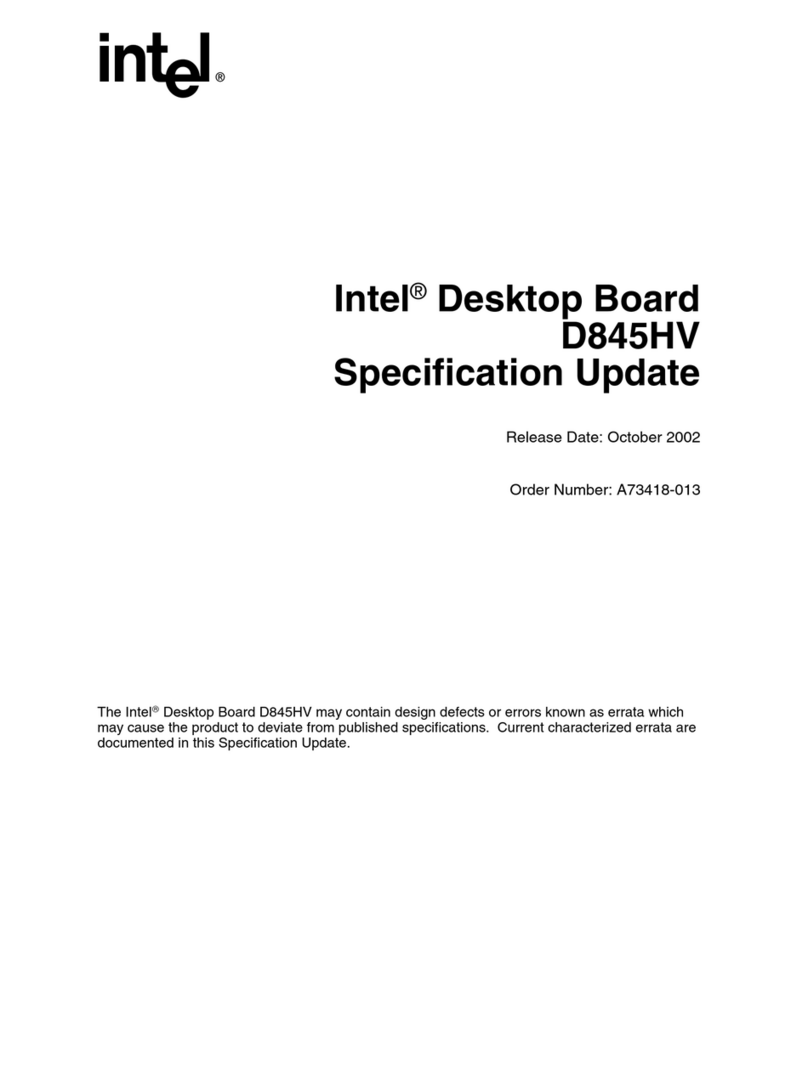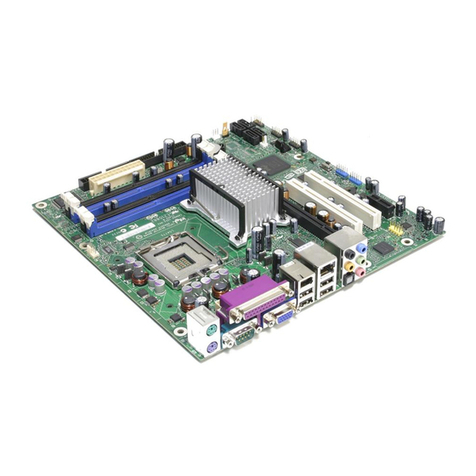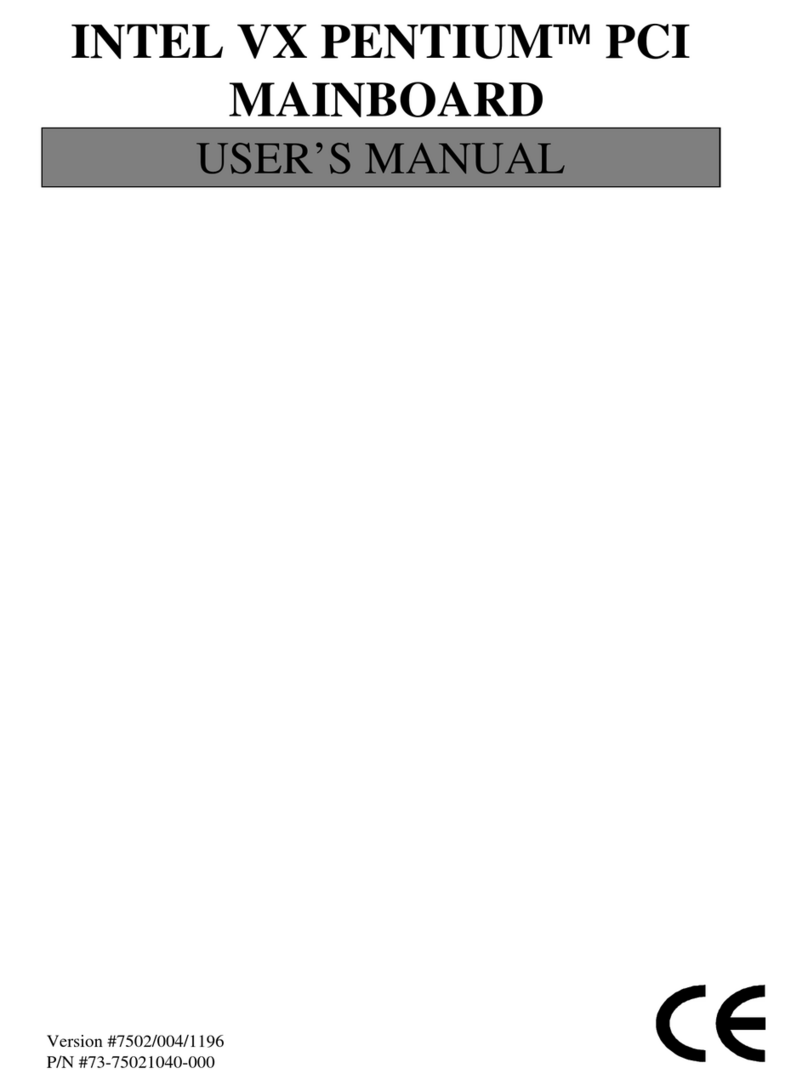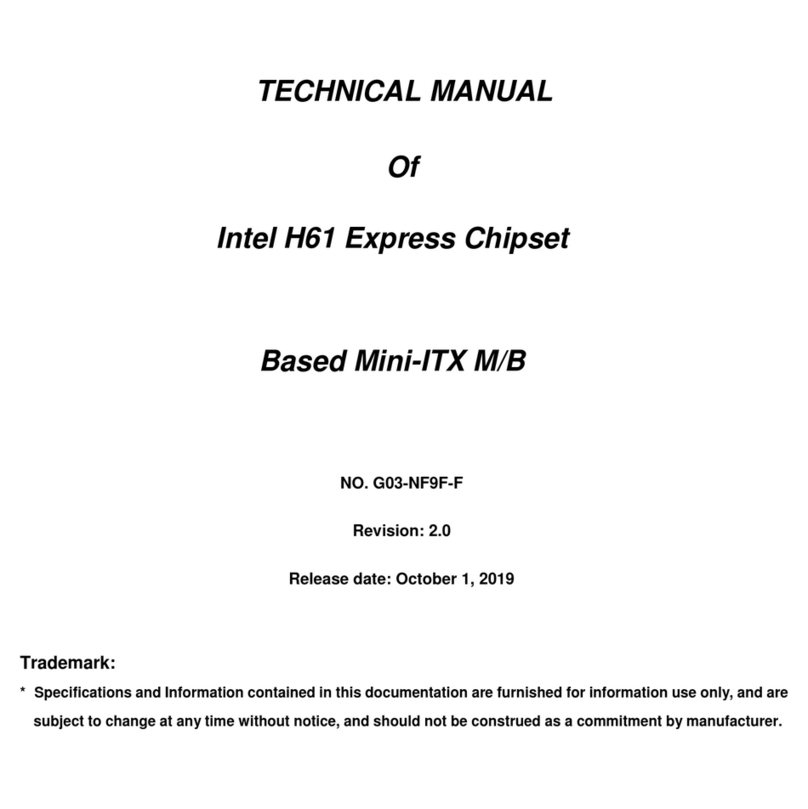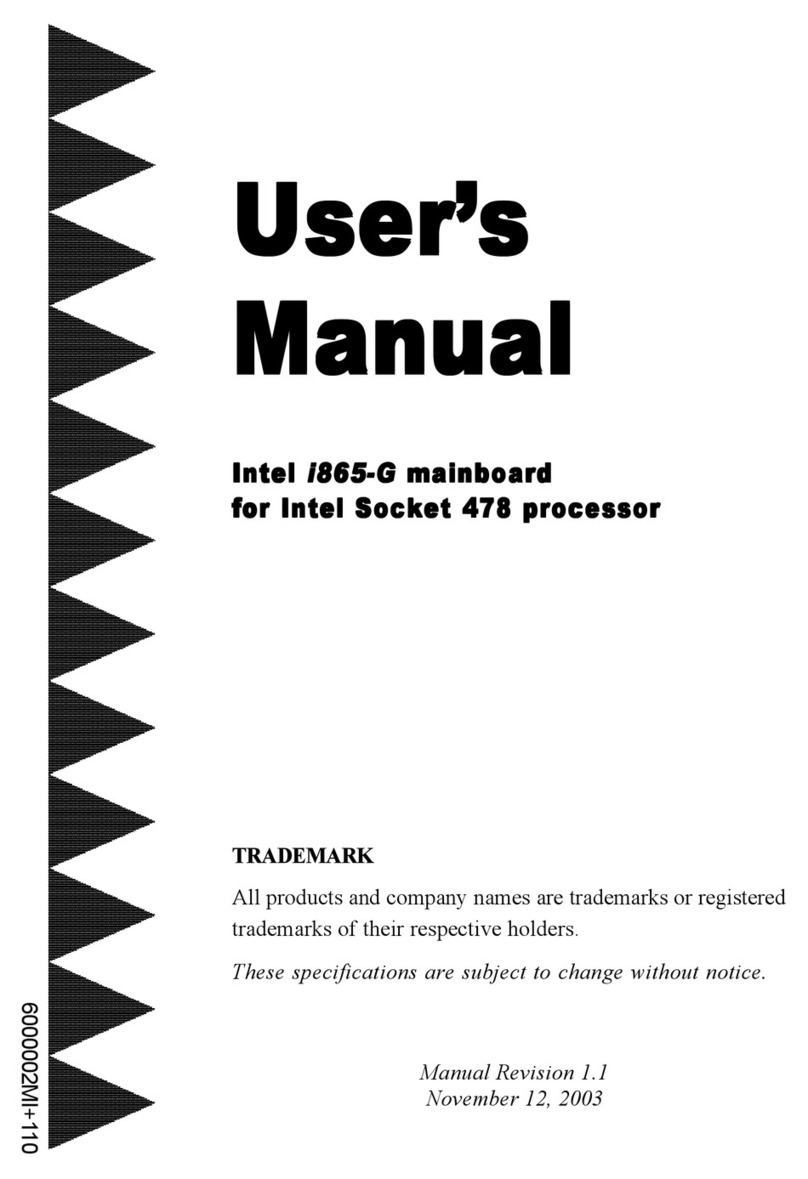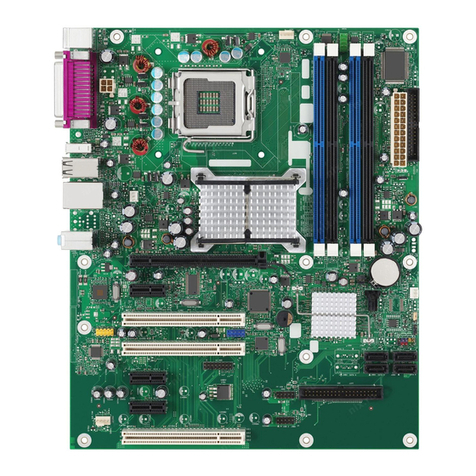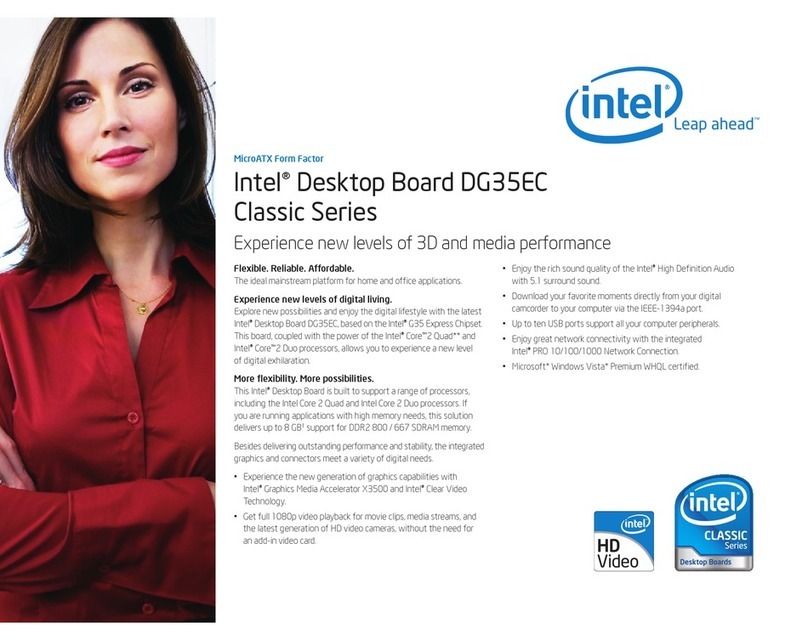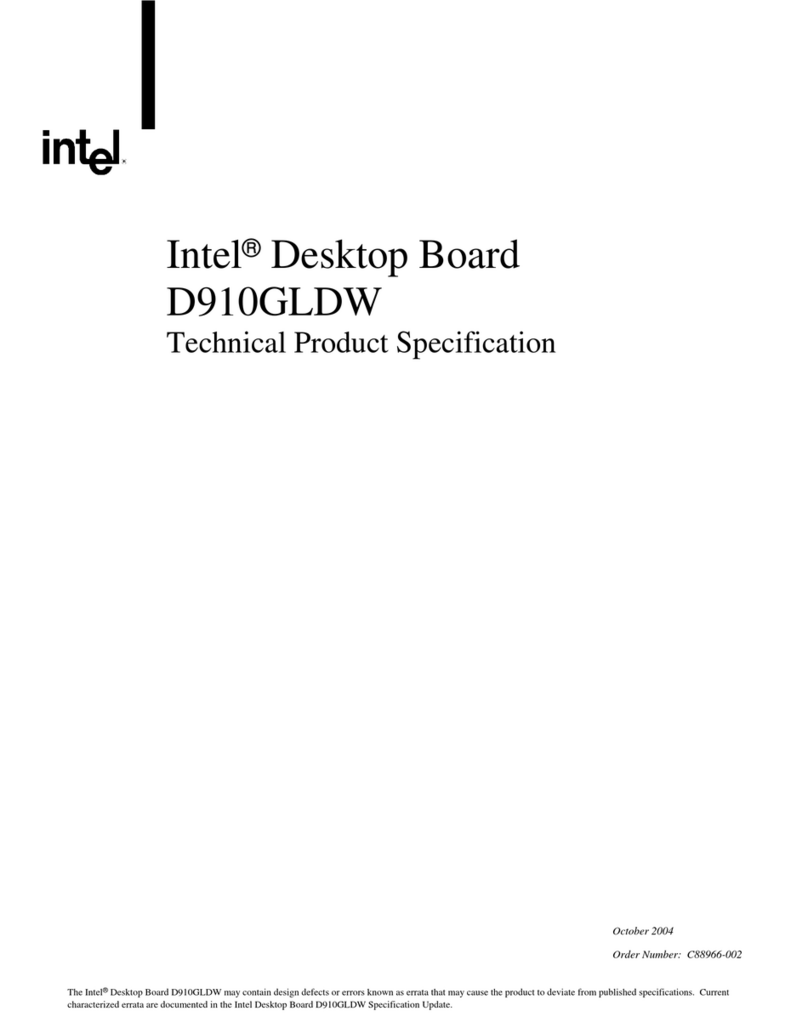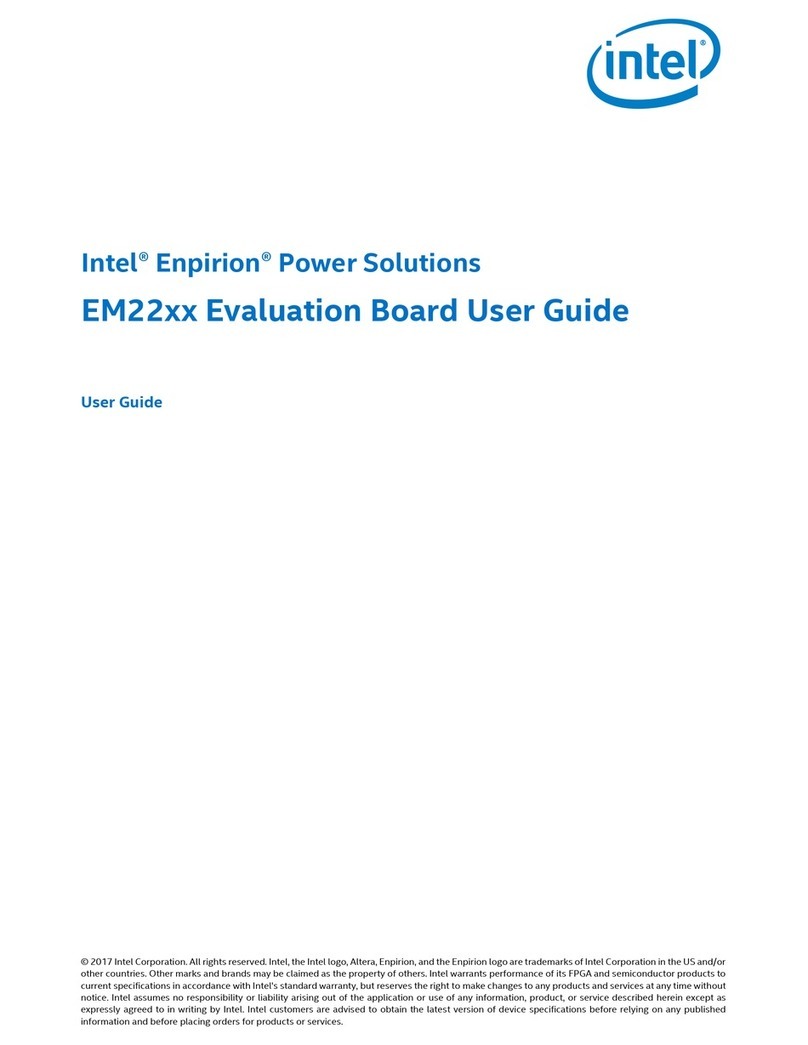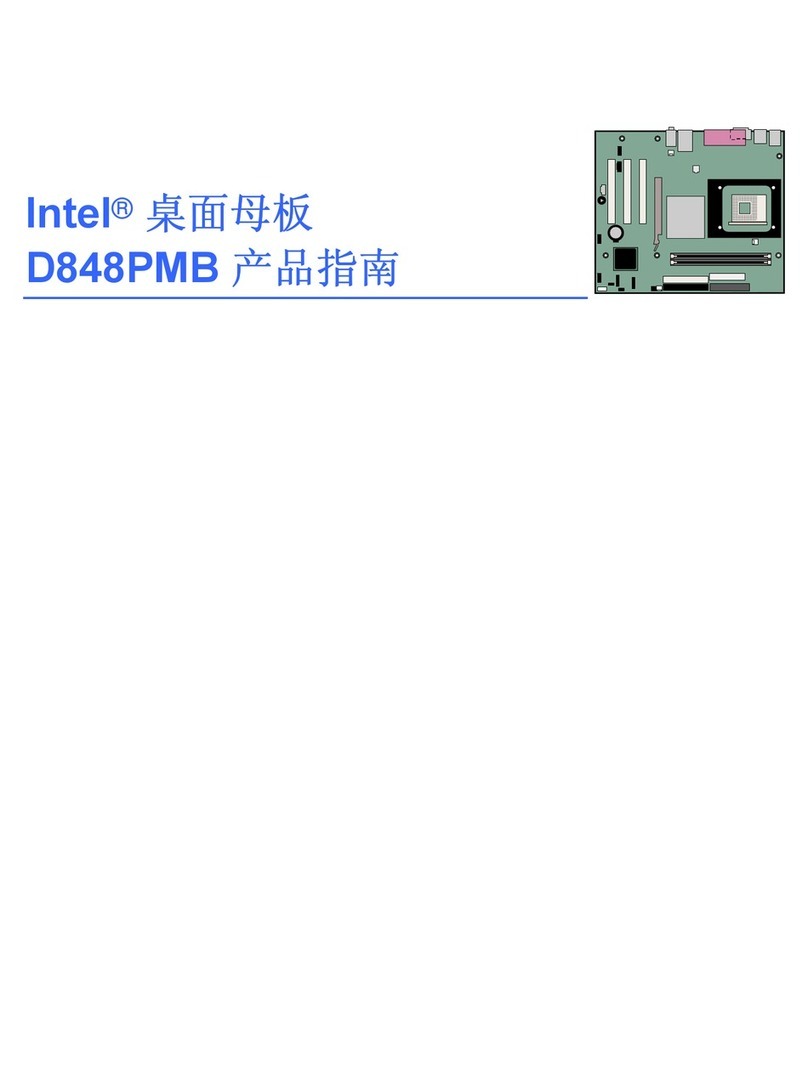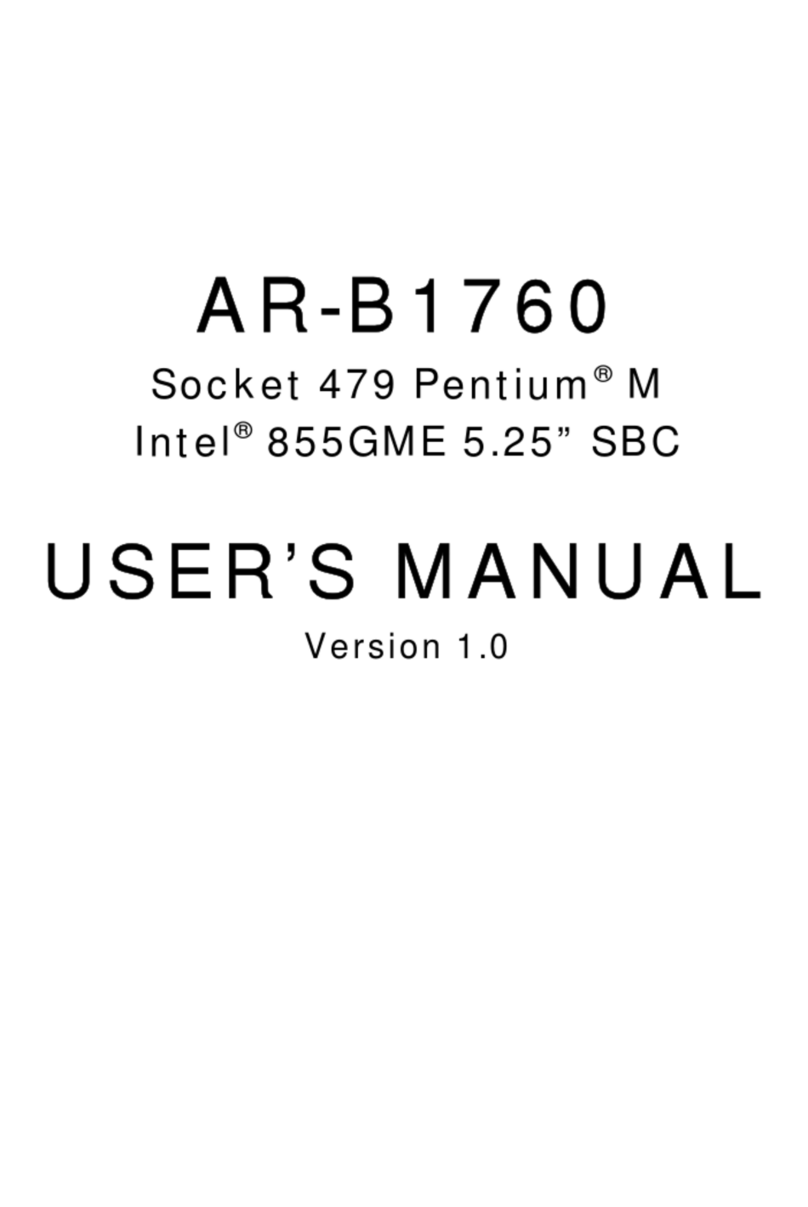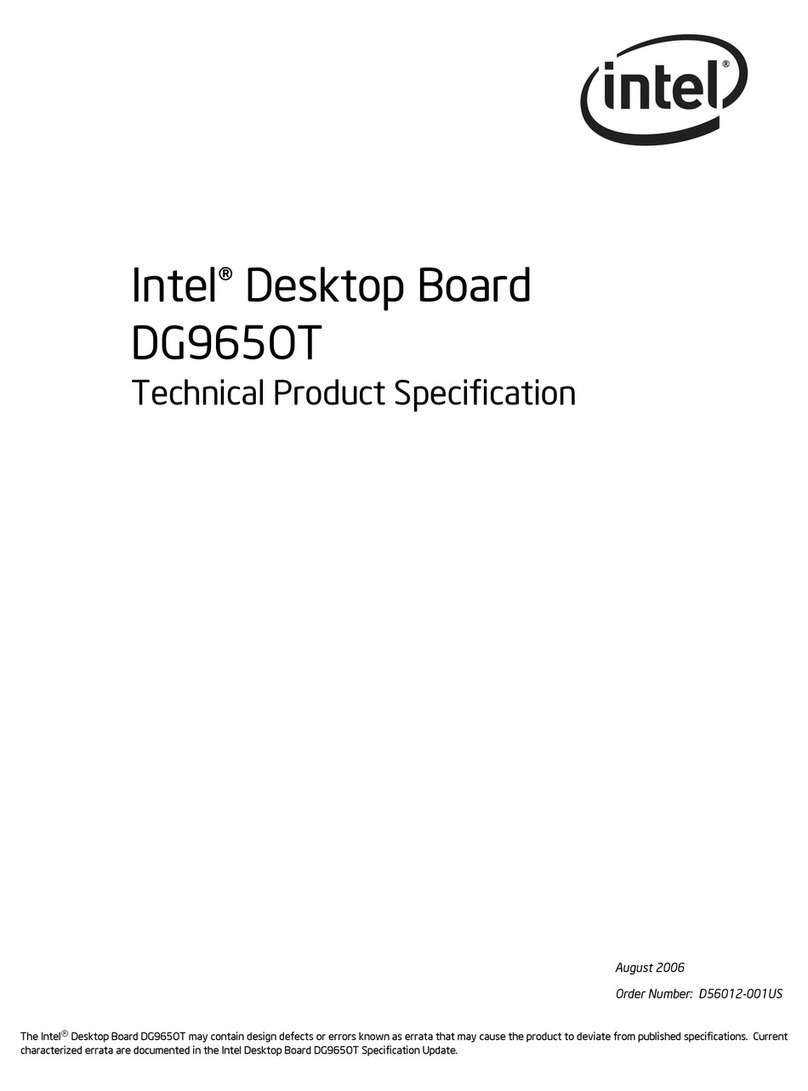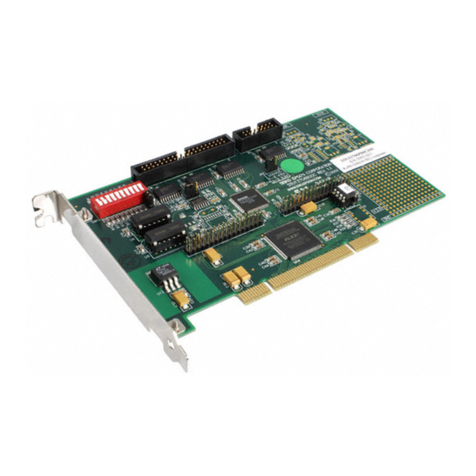
Intel Desktop Board DQ35MP Technical Product Specification
vi
2.2.2 Component-side Connectors and Headers ................................ 43
2.3 Jumper Block .................................................................................. 51
2.4 Mechanical Considerations ................................................................ 52
2.4.1 Form Factor......................................................................... 52
2.5 Electrical Considerations................................................................... 53
2.5.1 Power Supply Considerations ................................................. 53
2.5.2 Fan Header Current Capability................................................ 53
2.5.3 Add-in Board Considerations .................................................. 54
2.6 Thermal Considerations.................................................................... 54
2.7 Reliability ....................................................................................... 56
2.8 Environmental ................................................................................ 56
3Overview of BIOS Features
3.1 Introduction ................................................................................... 57
3.2 BIOS Flash Memory Organization....................................................... 58
3.3 Resource Configuration .................................................................... 58
3.3.1 PCI Autoconfiguration ........................................................... 58
3.3.2 PCI IDE Support................................................................... 59
3.4 System Management BIOS (SMBIOS)................................................. 59
3.5 Legacy USB Support ........................................................................ 60
3.6 BIOS Updates ................................................................................. 61
3.6.1 Language Support ................................................................ 61
3.6.2 Custom Splash Screen .......................................................... 61
3.7 BIOS Recovery................................................................................ 62
3.8 Boot Options................................................................................... 62
3.8.1 CD-ROM Boot ...................................................................... 62
3.8.2 Network Boot....................................................................... 62
3.8.3 Booting Without Attached Devices........................................... 63
3.8.4 Changing the Default Boot Device During POST ........................ 63
3.9 Adjusting Boot Speed....................................................................... 63
3.9.1 Peripheral Selection and Configuration..................................... 63
3.9.2 BIOS Boot Optimizations ....................................................... 64
3.10 BIOS Security Features .................................................................... 64
4Error Messages and Beep Codes
4.1 Speaker ......................................................................................... 67
4.2 BIOS Beep Codes ............................................................................ 67
4.3 BIOS Error Messages ....................................................................... 67
4.4 Port 80h POST Codes ....................................................................... 68
5Regulatory Compliance and Battery Disposal Information
5.1 Regulatory Compliance..................................................................... 73
5.1.1 Safety Standards.................................................................. 73
5.1.2 European Union Declaration of Conformity Statement................ 74
5.1.3 Product Ecology Statements................................................... 75

